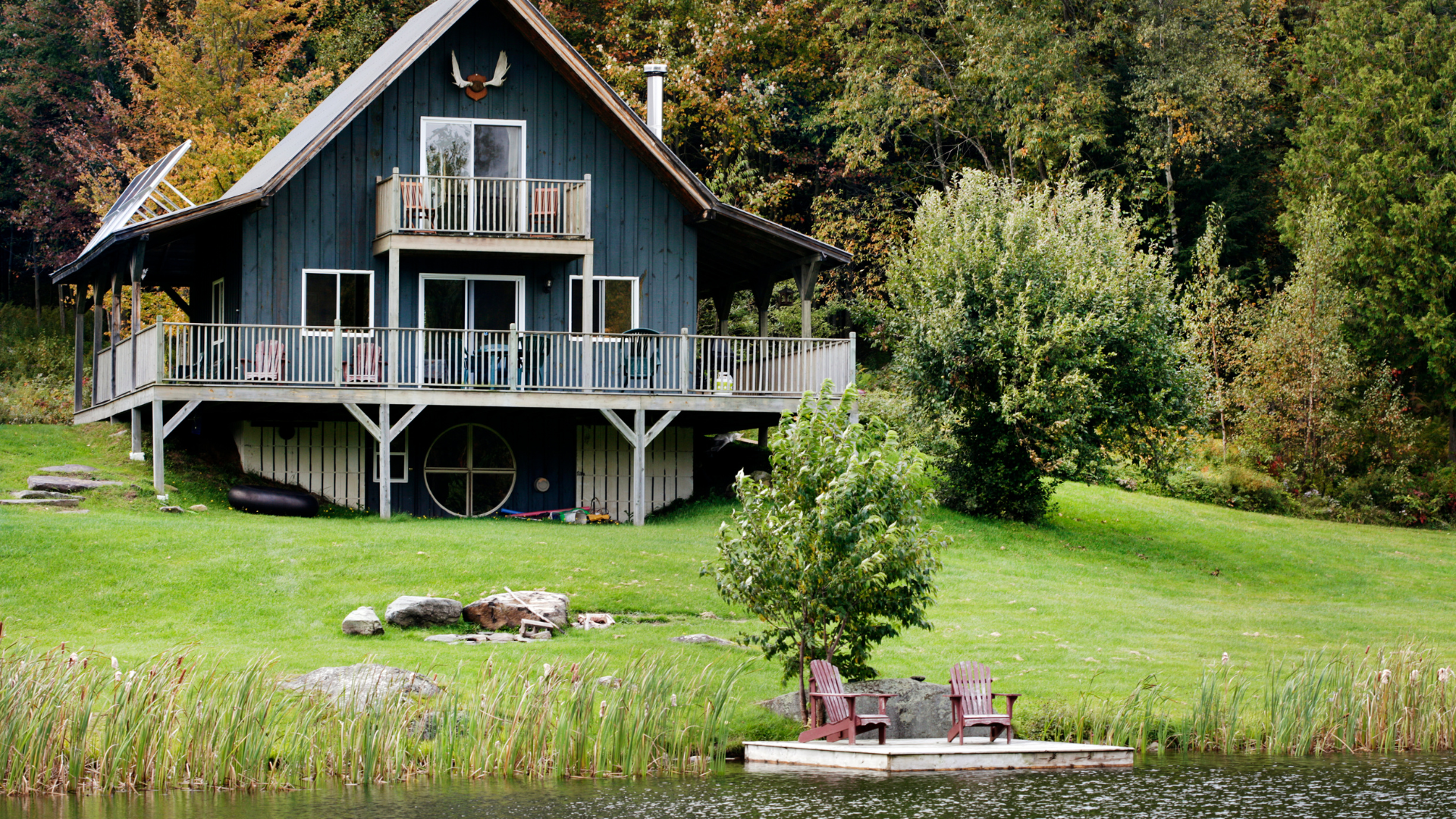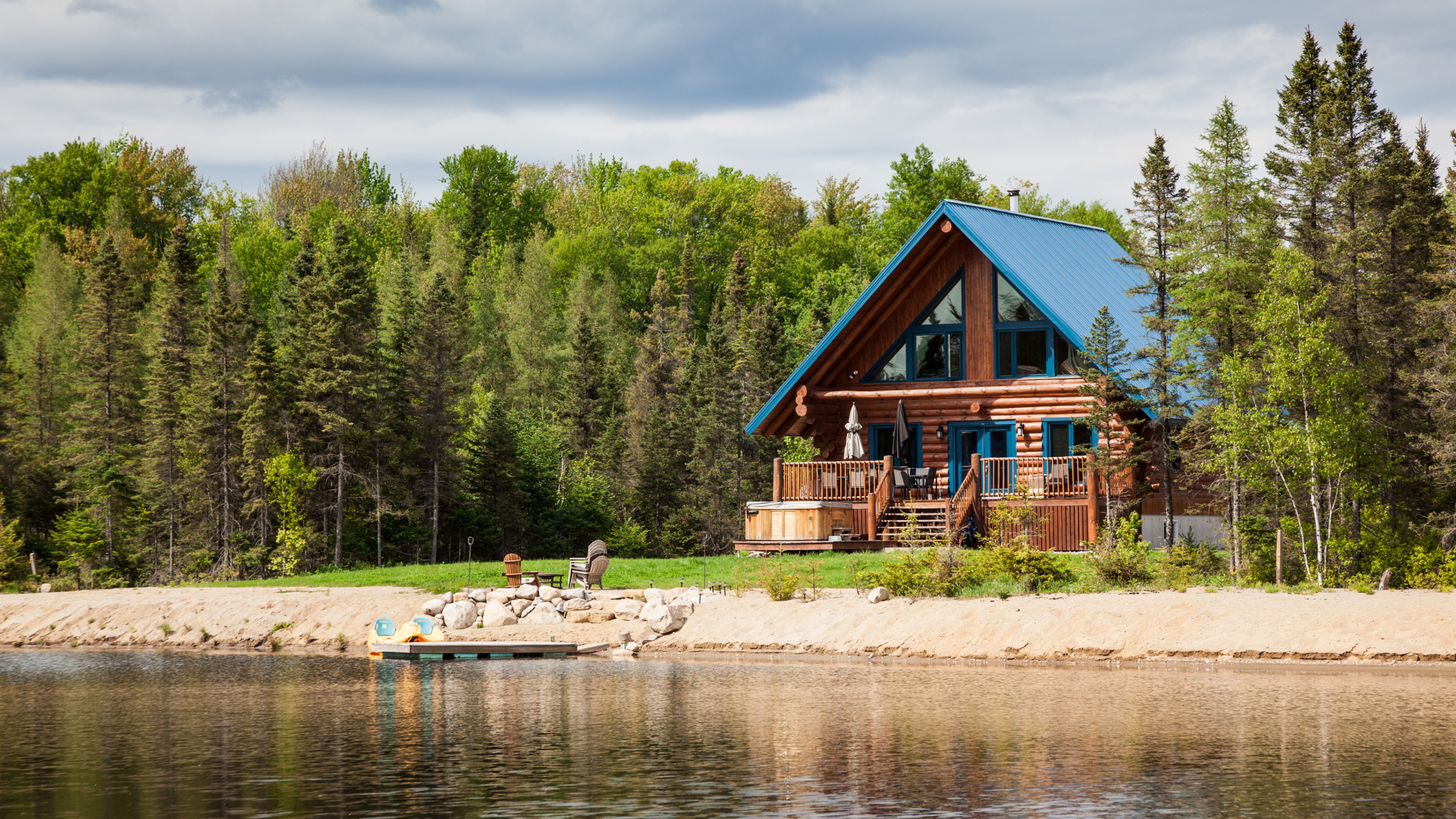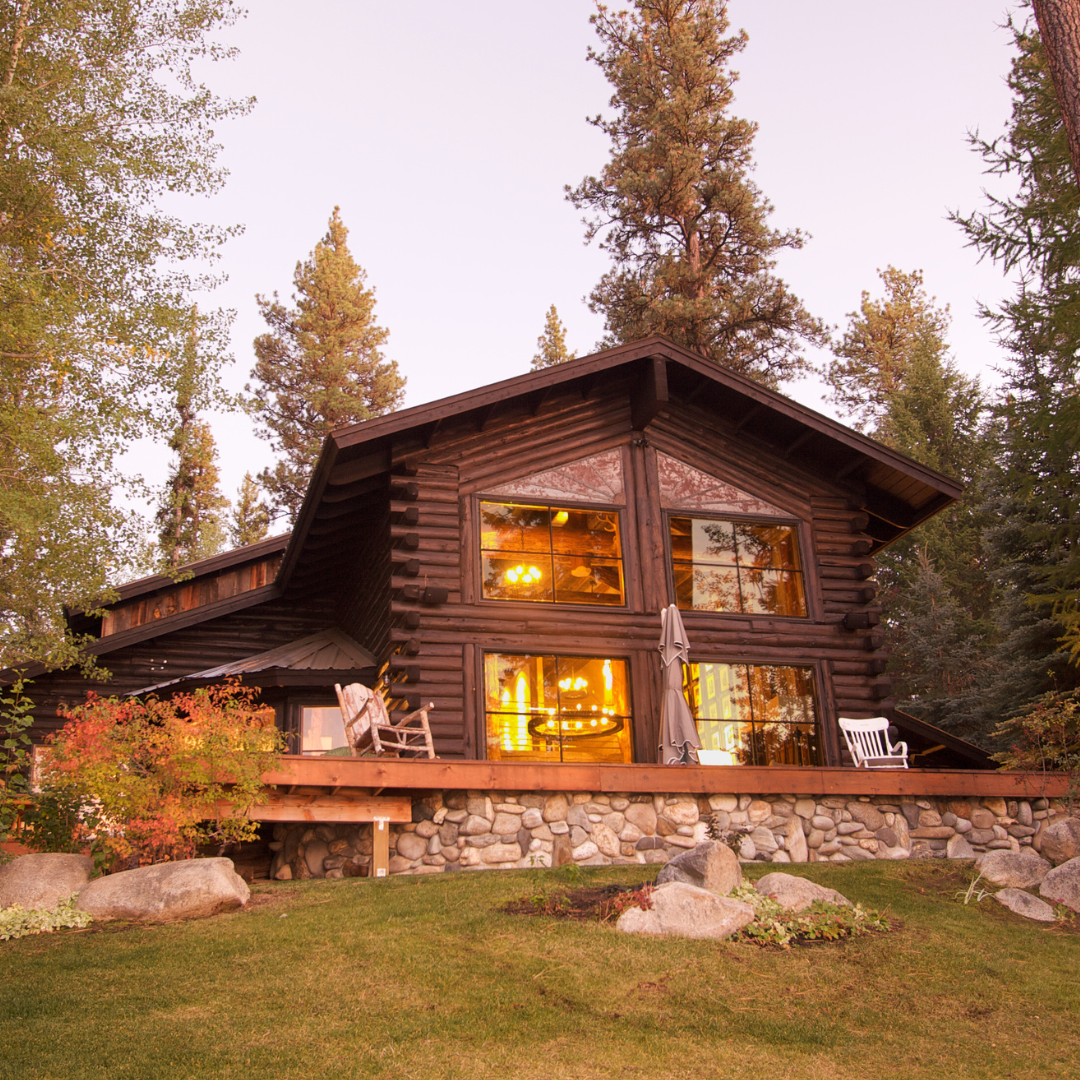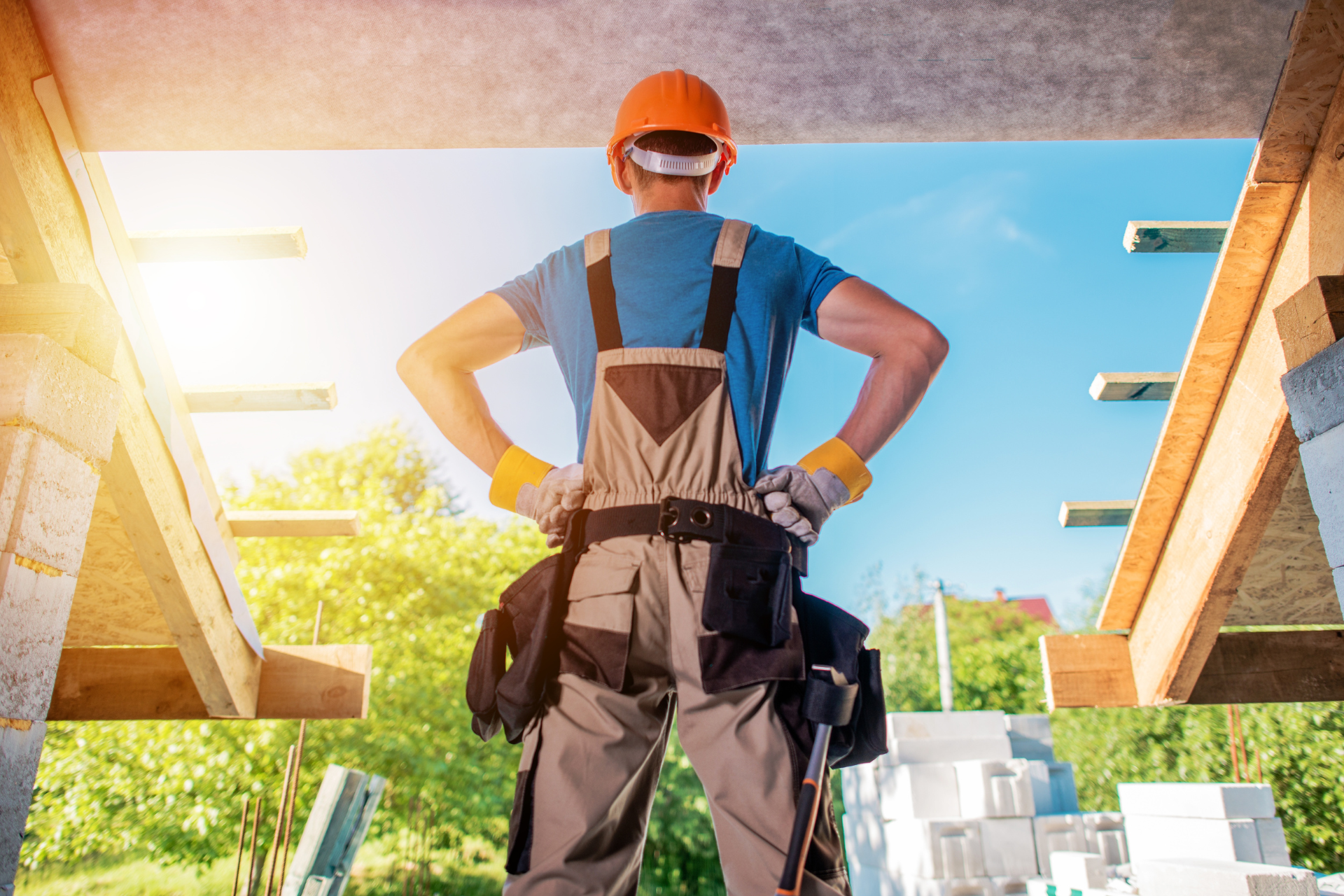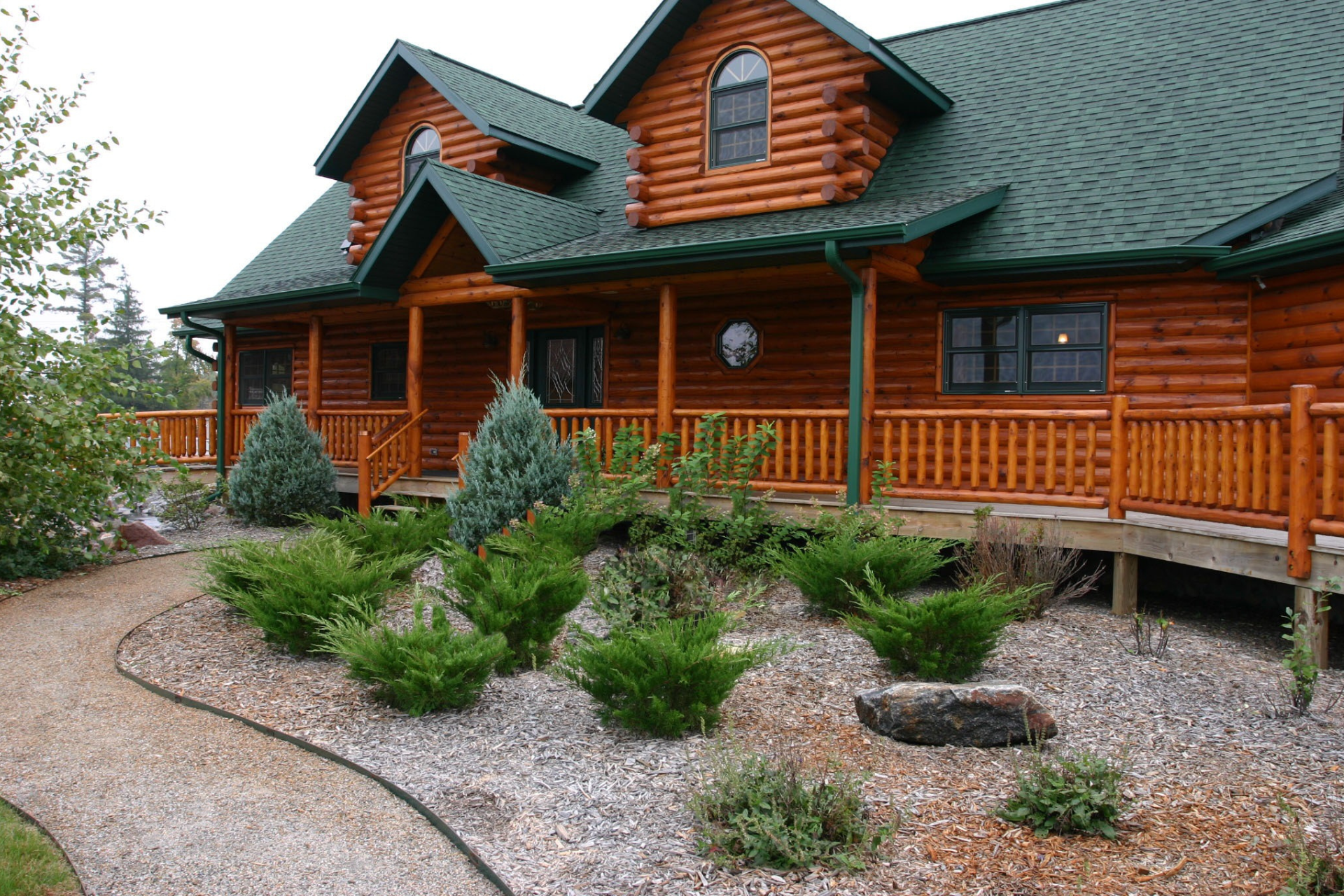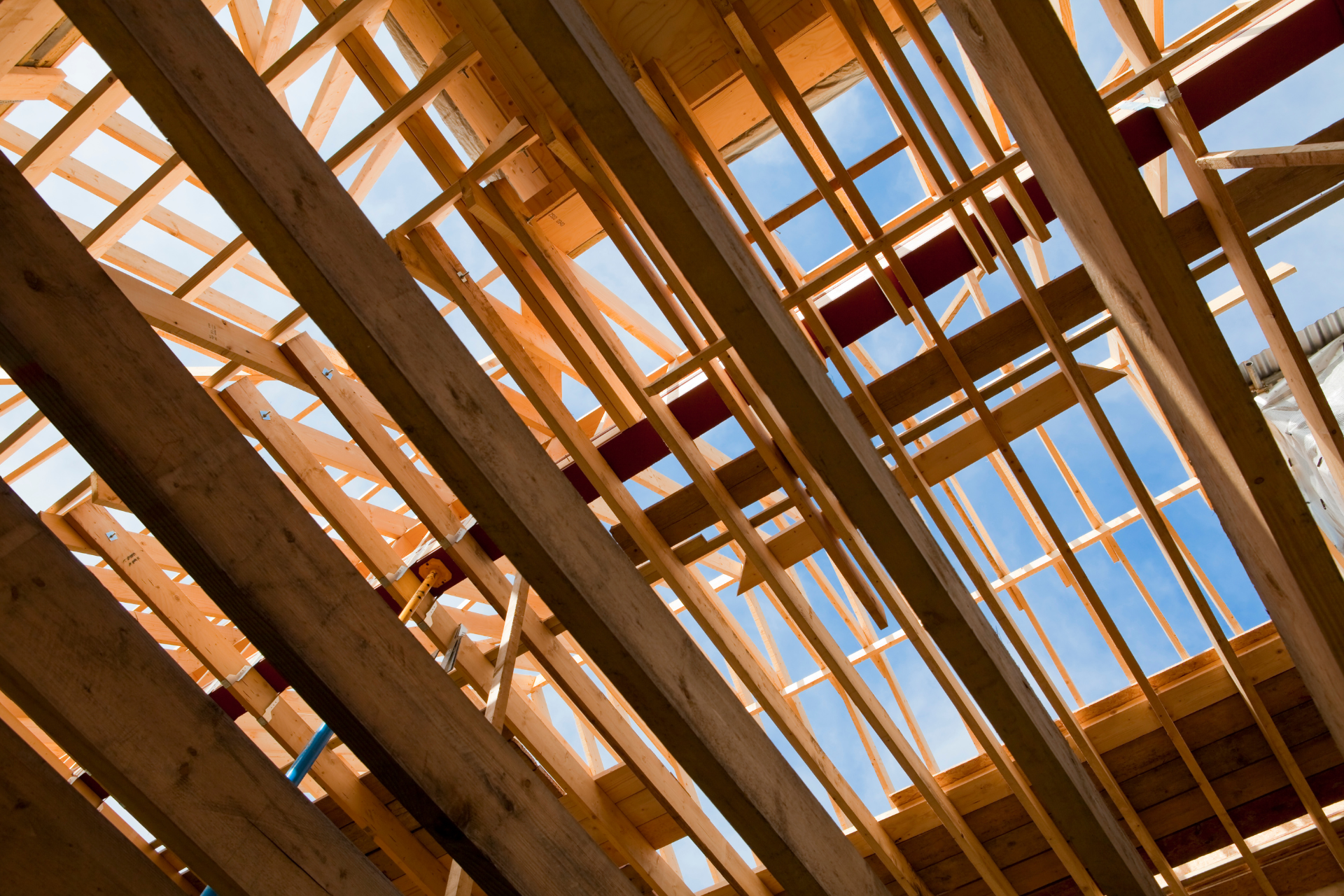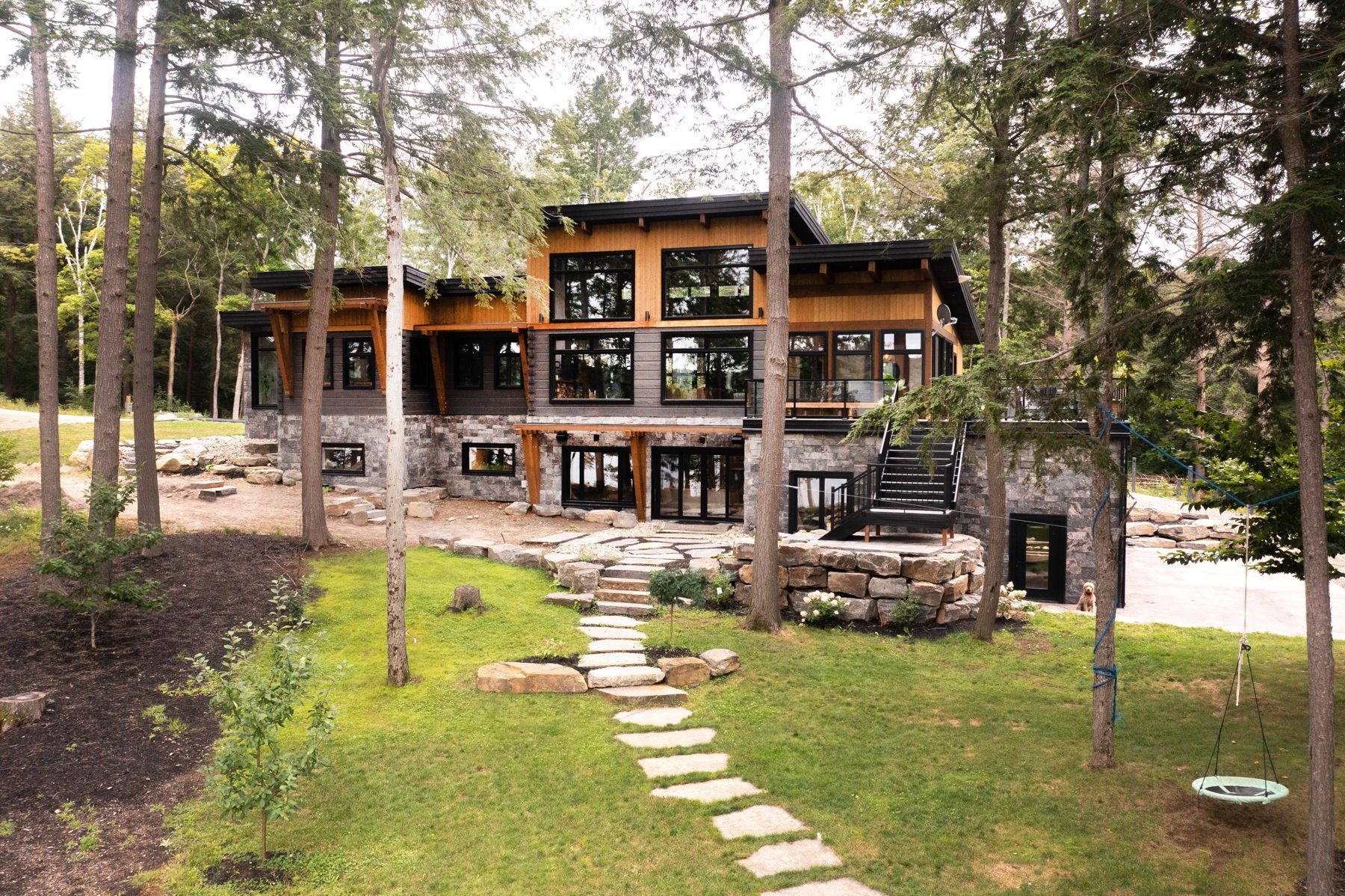Dream Home Cottage Haliburton: Sustainable building 2024
The concept of sustainable building has been gaining remarkable momentum in Canada, especially from 2023 to 2024, as environmental awareness and the pursuit of eco-friendly lifestyles continue to grow. Across the nation, architects, builders, and homeowners are increasingly embracing green construction practices, recognizing their benefits not just for the environment, but also for health and long-term cost savings. This movement towards sustainable building emphasizes energy efficiency, reduced carbon footprint, and the use of eco-friendly materials. In the heart of this evolution stands Dream Home Cottage Haliburton, a visionary in the realm of sustainable home construction. Located in the picturesque
Haliburton County, Ontario, Dream Home Cottage Haliburton is not just constructing homes; they are crafting sustainable living spaces that harmonize with the natural environment. Their approach reflects a deep commitment to the principles of green building, showcasing how modern construction can align with ecological stewardship to create homes that are both beautiful and sustainable.
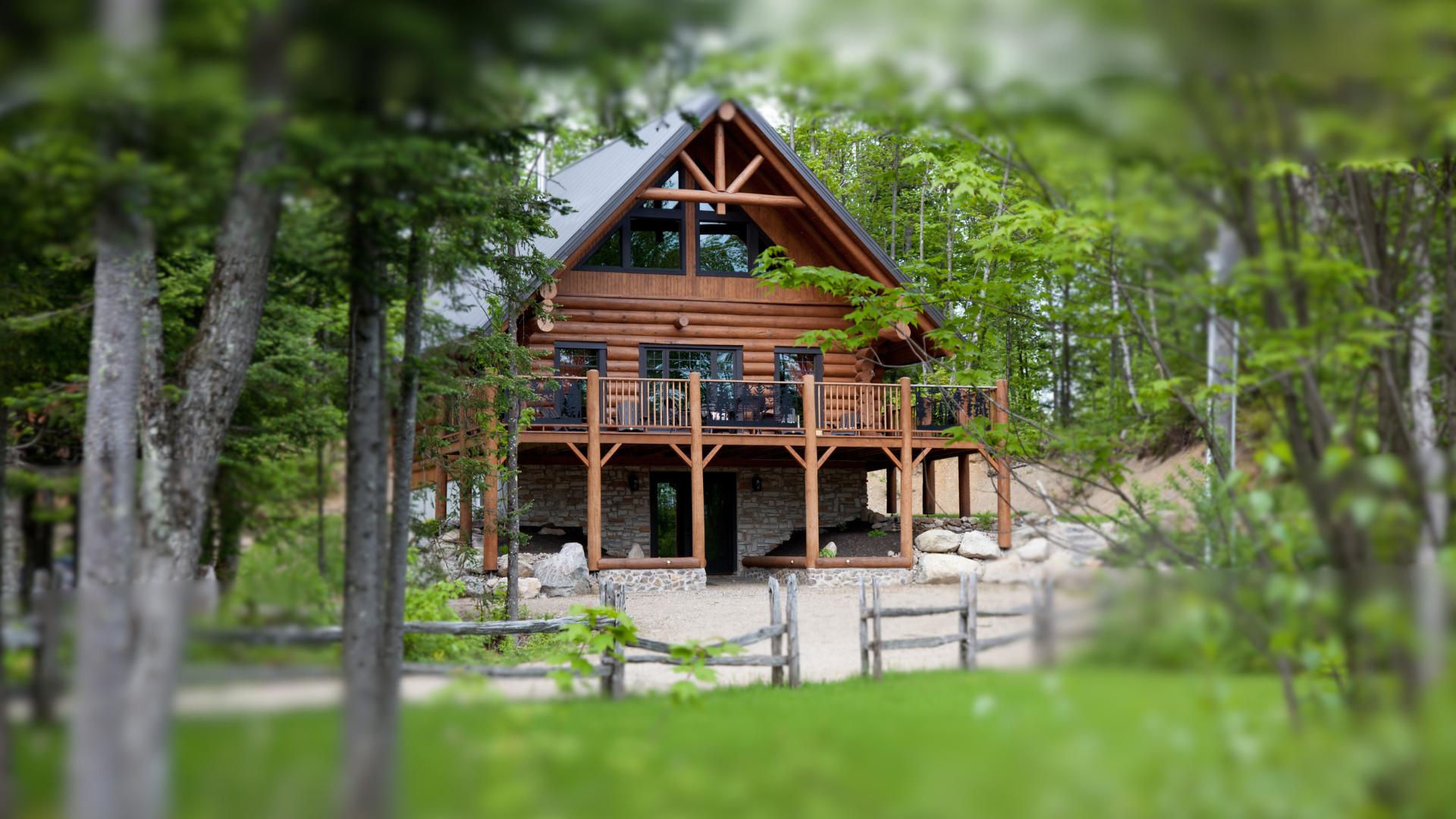
Sustainable Building Practices in Canada
Between 2023 and 2024, Canada has witnessed a significant shift towards sustainable building practices, responding to the growing environmental concerns and the collective drive towards a more sustainable future. This period has seen the emergence and standardization of several key practices across the nation's construction industry.
Energy Efficiency: A major focus has been on energy efficiency, with buildings designed to minimize energy consumption. This includes the use of high-performance insulation, energy-efficient windows, and advanced HVAC systems. The goal is to create structures that maintain their internal environment with minimal energy use, thereby reducing their carbon footprint.
Green Building Materials: There has been a substantial move towards using sustainable and locally sourced materials. This includes the use of recycled materials, sustainably harvested wood, and low-emission products. The choice of these materials is driven by their reduced environmental impact during both production and disposal.
Water Conservation: Water conservation techniques are increasingly being integrated into building designs. Low-flow fixtures, rainwater harvesting systems, and efficient irrigation methods are now commonplace in Canadian construction, contributing to significant water savings.
Solar Energy Integration: The integration of solar panels and solar energy systems has become more prevalent. These systems provide a renewable source of energy, reducing reliance on traditional power grids and supporting Canada’s commitment to renewable energy.
Green Roofs and Living Walls: The adoption of green roofs and living walls has grown, particularly in urban areas. These features not only enhance a building's aesthetics but also contribute to biodiversity, improve air quality, and provide natural insulation.
Smart Home Technologies: The incorporation of smart home technologies for monitoring and optimizing energy and water use has become a standard practice. These technologies allow homeowners to monitor their consumption patterns and make adjustments for greater efficiency.
In this context,
Dream Home Cottage Haliburton has emerged as a leader, embodying these national trends in its projects. Their commitment to sustainable building practices reflects the broader Canadian ethos of balancing modern living with environmental responsibility, leading the way in creating homes that are not only efficient and comfortable but also environmentally conscious.
Sustainable Building in Ontario
Ontario has been a frontrunner in adopting sustainable building practices, setting a benchmark within Canada. The province's approach to green construction is multifaceted, encompassing innovative building techniques, supportive policies, and incentives that encourage sustainable development.
Building Practices and Innovations
Net-Zero Buildings: Ontario has seen a rise in the construction of net-zero buildings, which generate as much energy as they consume. Utilizing solar panels, superior insulation, and high-efficiency windows, these buildings are at the forefront of sustainable design.
Passive House Design: This European concept, adapted in Ontario, focuses on creating ultra-low energy buildings that require little energy for heating or cooling. The design utilizes natural sources of heat and light, efficient ventilation systems, and thermal insulation.
Green Infrastructure: Incorporating green spaces within urban developments, such as rooftop gardens and green walls, has become more prevalent. These practices contribute to urban biodiversity, help manage stormwater, and improve air quality.
Policies and Incentives
Ontario Building Code (OBC) Amendments: The OBC has been updated to include stricter energy efficiency requirements for new constructions. These amendments are aimed at reducing greenhouse gas emissions from buildings, a significant contributor to climate change.
Green Energy Act: Although partially repealed, the Green Energy Act has had a lasting impact by promoting renewable energy projects and energy conservation.
Incentives for Renewable Energy: The province offers various incentives for the integration of renewable energy systems in buildings, such as solar and wind power. These incentives have made green technology more accessible and affordable.
Municipal Green Development Standards: Various municipalities in Ontario have developed green development standards, offering incentives like fast-tracked permits and reduced fees for buildings that meet certain environmental standards.
These practices and policies have not only fostered a more sustainable approach to building in Ontario but have also set a standard for others to follow. The province's commitment to sustainable development is evident in its support for innovative construction practices and in providing a conducive policy environment. This commitment aligns with the efforts of organizations like Dream Home Cottage Haliburton, who are actively integrating these sustainable practices into their building projects, furthering the green building movement in the region.
Haliburton County’s Approach to Sustainable Building
In Haliburton County, the approach to sustainable building mirrors a growing environmental consciousness and a commitment to preserving the natural beauty of the region. Dream Home Cottage Haliburton, along with other local stakeholders, plays a pivotal role in this green building movement, adopting and promoting practices that align with the county's ecological values.
Implementation of Sustainable Building Practices
Energy Efficiency: Haliburton County emphasizes constructing energy-efficient homes. Builders, including Dream Home Cottage Haliburton, focus on enhanced insulation, high-efficiency HVAC systems, and energy-efficient windows and doors to minimize energy consumption and greenhouse gas emissions.
Use of Sustainable Materials: There's a growing trend towards using locally sourced, sustainable building materials. This includes using reclaimed wood, sustainable forestry products, and low-VOC (Volatile Organic Compounds) paints and finishes, reducing the environmental impact of construction.
Solar Energy Adoption:
Incorporating solar energy solutions in new constructions is becoming increasingly common. By installing solar panels, homes in Haliburton County can reduce reliance on non-renewable energy sources and embrace renewable energy
Local Initiatives and Policies
Building Code Adherence: Haliburton County ensures strict adherence to the Ontario Building Code, which includes guidelines for energy-efficient construction. This adherence ensures that new buildings meet a minimum standard for sustainability.
Incentives for Green Building:
While specific local incentives vary, there are initiatives that encourage sustainable building through rebates and grants for using renewable energy systems and energy-efficient appliances.
Community Education and Engagement:
Local government and organizations often hold workshops and information sessions to educate residents and builders about the benefits of sustainable construction and living. This community engagement fosters a collective approach to eco-friendly building.
Dream Home Cottage Haliburton exemplifies these practices by integrating green design principles into their construction projects. They not only comply with existing regulations and standards but often exceed them, demonstrating an unwavering commitment to sustainability. This approach in Haliburton County reflects a harmonious balance between development and environmental stewardship, ensuring that the natural charm and health of the region are preserved for future generations.
Consumer Demand for Sustainable Building
In recent years, there has been a noticeable shift in consumer preferences towards eco-friendly homes, a trend that has significantly influenced the building industry's approach to sustainability. This change is driven by a growing awareness of environmental issues, the desire for healthier living environments, and the economic benefits of sustainable homes.
Increased Environmental Awareness:
Modern consumers are more informed about the environmental impact of their choices, including their homes. Concerns over climate change and environmental degradation have led many to seek out sustainable building options that minimize carbon footprints and use resources more efficiently.
Health and Wellbeing: There's a growing recognition that eco-friendly homes offer healthier living spaces. Features like improved indoor air quality, natural lighting, and non-toxic building materials are highly valued. This emphasis on health and wellness is prompting builders to incorporate these elements into their designs.
Economic Benefits: Sustainable homes often come with the advantage of reduced utility bills due to energy-efficient designs and renewable energy sources like solar power. Additionally, many buyers recognize that eco-friendly homes can have better resale values, making them a wise investment.
Response from the Building Industry: In response to this consumer demand, builders and developers, including companies like Dream Home Cottage Haliburton, are increasingly focusing on green building practices. This shift is seen in the adoption of energy-efficient building techniques, sustainable materials, and smart home technologies that promote sustainability.
Furthermore, the industry is also seeing more certifications like LEED (Leadership in Energy and Environmental Design), becoming a selling point for new constructions. Builders are not only responding to market demands but are also anticipating future trends, recognizing that sustainability is becoming an integral aspect of home construction and design.
Consumer demand for sustainable building is reshaping the construction industry, driving innovation, and leading to a more environmentally conscious approach to home building.
Government Initiatives in Sustainable Building
The Canadian and Ontario governments have implemented various policies and initiatives to promote sustainable building, significantly influencing the construction industry. These measures reflect a commitment to reducing environmental impact and fostering sustainable development.
Canadian Government Initiatives
National Building Code Updates: The Canadian government has updated the National Building Code to include more stringent energy efficiency standards, pushing the industry towards greener construction practices.
Incentives for Green Construction:
There are federal incentives, including tax credits and grants, for builders and homeowners who adopt sustainable building practices, such as using energy-efficient materials and renewable energy technologies.
Investment in Green Infrastructure:
Significant investments in green infrastructure projects across Canada encourage the development of sustainable public buildings and community spaces.
Ontario Government Initiatives
Green Energy Act Implementation: Though partially repealed, the Green Energy Act in Ontario set the stage for increased use of renewable energy sources in buildings and introduced several incentives for green building.
Ontario Building Code (OBC): The OBC includes specific provisions to enhance energy efficiency in buildings, pushing builders to adopt practices that reduce energy consumption and greenhouse gas emissions.
Sustainability Education and Training:
Ontario supports programs that educate builders and tradespeople about sustainable building techniques, ensuring the workforce is equipped with the knowledge to implement green practices.
These governmental initiatives are driving the construction industry to innovate and adapt. Builders, including Dream Home Cottage Haliburton, are increasingly incorporating energy-efficient designs, sustainable materials, and renewable energy systems into their projects. The industry's response not only aligns with these regulatory requirements but also caters to the growing consumer demand for sustainable living spaces. This synergy between government policies and industry practices is pivotal in advancing sustainable building across Canada and particularly in Ontario.
Industry Response to Sustainable Building Trends
The building industry's response to sustainable building trends has been proactive and innovative, particularly in adapting to evolving consumer preferences and government mandates. Companies like Dream Home Cottage Haliburton are at the forefront of this transformation, integrating green practices into their projects.
Adoption of Green Technologies: One of the primary responses has been the adoption of advanced green technologies. This includes energy-efficient HVAC systems, solar panels, and smart home systems that optimize energy use. Builders are increasingly employing these technologies to meet both environmental standards and consumer expectations for energy efficiency.
Use of Sustainable Materials:
The industry has shifted towards using sustainable building materials. This includes recycled materials, locally sourced timber, and non-toxic paints and finishes. Dream Home Cottage Haliburton, among others, has embraced these materials, recognizing their reduced environmental impact and appeal to environmentally conscious consumers.
Design Innovations: There's a growing emphasis on sustainable design principles, such as maximizing natural light, improving insulation, and incorporating green spaces like living walls and rooftop gardens. These designs not only enhance energy efficiency but also contribute to healthier living environments.
Compliance with Updated Building Codes:
In response to updated building codes and regulations,
builders are ensuring that new constructions comply with higher standards for energy efficiency and environmental impact. This compliance is not just a legal requirement but also a market necessity to stay competitive.
Education and Training: The industry has also invested in educating and training its workforce in sustainable building practices. This ensures that the skills and knowledge needed to implement these practices are widespread and up-to-date.
The building industry's response to sustainable trends, as exemplified by Dream Home Cottage Haliburton, is characterized by embracing new technologies, sustainable materials, innovative designs, compliance with regulatory standards, and a commitment to education and training. These adaptations are crucial in meeting the dual demands of environmental stewardship and consumer expectations.
Dream Home Cottage Haliburton’s Contributions
Dream Home Cottage Haliburton has made significant contributions to sustainable building in Haliburton County, exemplifying how a commitment to eco-friendly practices can be seamlessly integrated into residential construction.
Energy Efficiency: A cornerstone of their sustainable approach is a focus on energy efficiency. Dream Home Cottage Haliburton designs homes with high-quality insulation, energy-efficient windows, and advanced HVAC systems, significantly reducing energy consumption and costs.
Use of Renewable Energy: They incorporate renewable energy solutions, such as solar panel installations, into their home designs. This not only reduces reliance on traditional energy sources but also aligns with broader environmental goals.
Sustainable Materials: The company prioritizes the use of sustainable and locally sourced building materials. This includes reclaimed wood, eco-friendly insulation materials, and low-VOC paints, reducing the environmental impact of their construction projects.
Water Conservation: Dream Home Cottage Haliburton also integrates water conservation features, including rainwater harvesting systems and low-flow fixtures, which help in minimizing water usage and preserving local water resources.
Green Spaces:
They advocate for incorporating natural elements into home designs, like green roofs and living walls, which contribute to biodiversity and improve air quality.
Through these practices, Dream Home Cottage Haliburton plays a vital role in advancing sustainable building in Haliburton County. Their commitment to eco-friendly construction not only sets a high standard within the local building industry but also serves as a model for sustainable residential development.
Conclusion
The current state of sustainable building in Haliburton County, reflective of broader trends in Ontario and Canada, is one of dynamic progress and innovation. The industry, led by pioneers like Dream Home Cottage Haliburton, has embraced eco-friendly practices, responding to both environmental imperatives and consumer demands. Looking ahead, the prospects for sustainable building are promising, with ongoing advancements in technology and a growing societal commitment to sustainability. Dream Home Cottage Haliburton's impact in this sector is significant; their dedication to sustainable practices not only elevates local construction standards but also inspires a wider shift towards eco-conscious living and building, setting a benchmark for future developments in the field.
Frequently Asked Questions
Related Posts
